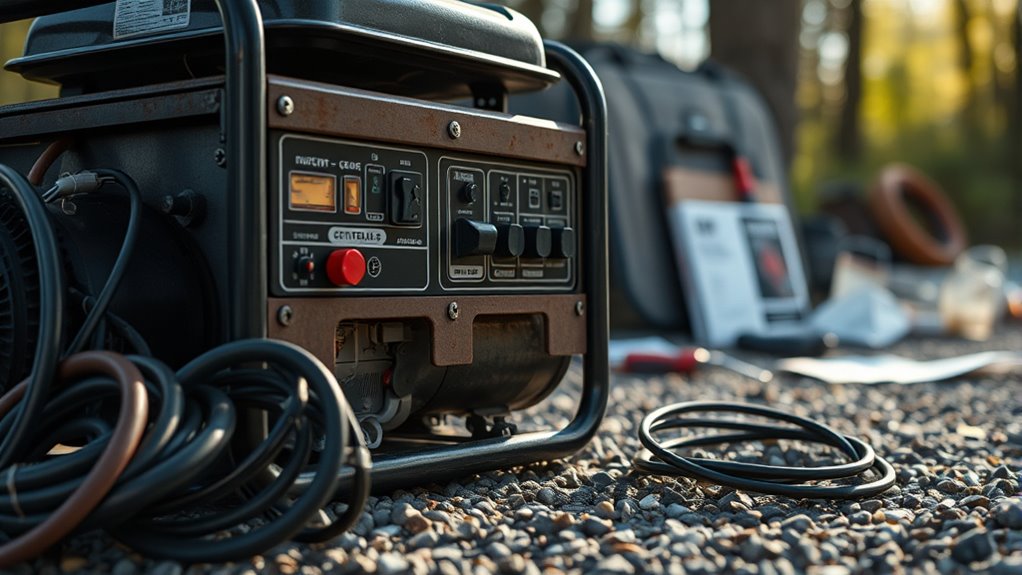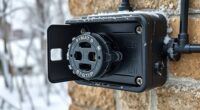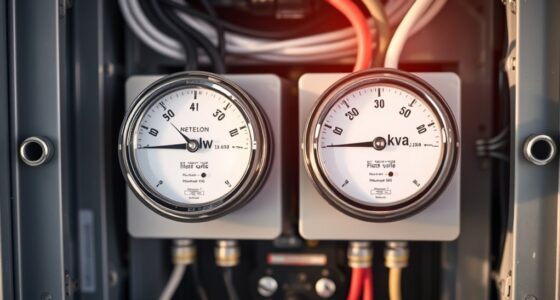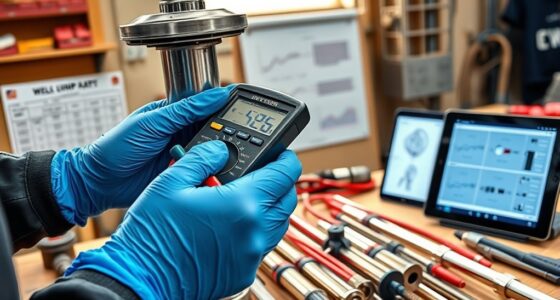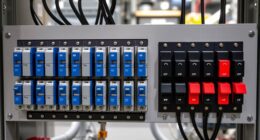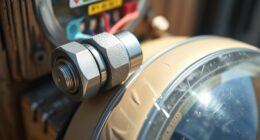Ignoring the difference between starting and running watts can cause unexpected costs and damage your generator or appliances. Oversestimating your needs wastes money, while underestimating can lead to overloads, failures, and costly repairs. Always account for both surge and continuous power to avoid these hidden expenses. Knowing how to properly assess your equipment’s power requirements helps you select the right generator and prevent costly surprises. Keep exploring for tips to guarantee you get it right.
Key Takeaways
- Ignoring starting watts can overload the generator, causing damage and costly repairs.
- Underestimating surge power may lead to frequent shutdowns and reduced appliance lifespan.
- Selecting a generator without sufficient surge capacity increases long-term operational costs.
- Properly accounting for both starting and running watts prevents unexpected expenses and appliance failure.
- Using detailed wattage calculations and surge considerations minimizes hidden costs and enhances reliability.
Understanding the Difference Between Starting and Running Watts
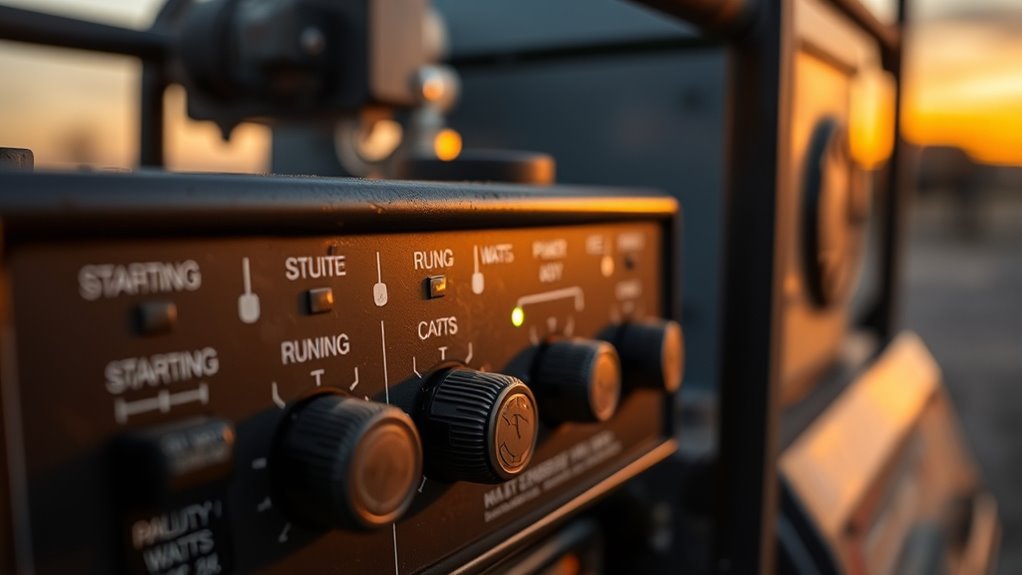
When choosing a generator, understanding the difference between starting and running watts is essential. Your generator capacity determines how much electrical load it can handle, but knowing the distinction helps prevent overloads. Starting watts refer to the surge of power needed to energize motors and appliances with motors, like refrigerators or power tools. Running watts are the continuous power your generator provides once appliances are running smoothly. If you only consider running watts, you might underestimate your needs, leading to insufficient power during startup. By accurately calculating your electrical load and understanding starting versus running watts, you ensure your generator can handle initial surges without risking damage. This knowledge helps you select a generator that meets your needs without overspending on unnecessary capacity. Additionally, understanding surge capacity is crucial because it reflects your generator’s ability to handle temporary power spikes without failure.
Common Mistakes When Matching Appliances to Your Generator
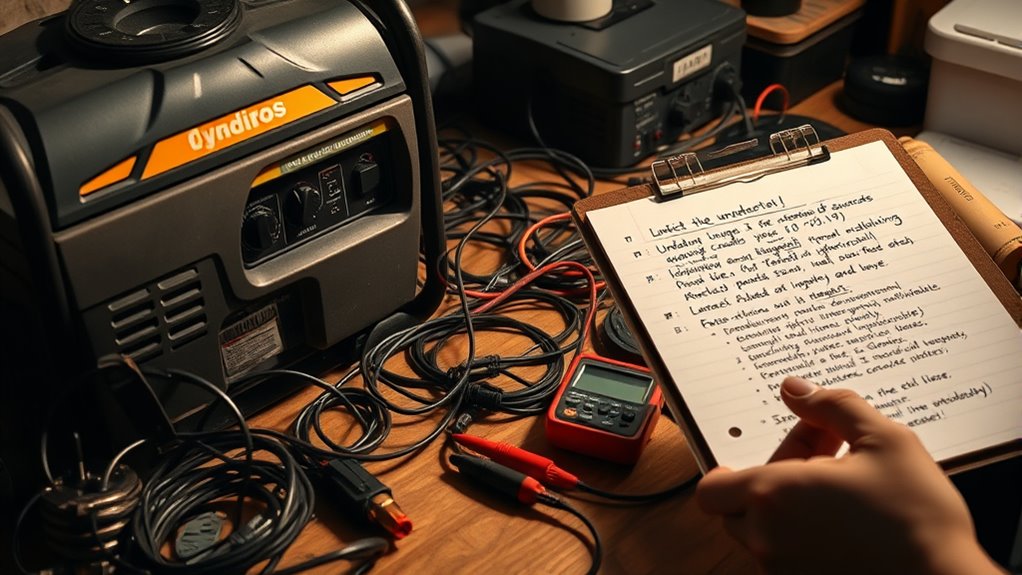
One common mistake is oversimplifying your power needs by only considering the running watts of appliances, which can lead to underestimating the surge power required during startup. This oversight can cause your generator to strain or shut down unexpectedly. To avoid this, always account for both running and starting watts when matching appliances to your generator. Neglecting this can also impact generator maintenance, as frequent overloads accelerate wear and tear. Additionally, choosing a generator with insufficient capacity may reduce fuel efficiency, forcing it to work harder than necessary. Properly sizing your generator ensures it can handle surge demands comfortably, preventing damage and optimizing fuel consumption. Being precise with your calculations saves money and extends your generator’s lifespan while maintaining reliable power. Understanding the mechanics of pinball machines can help you appreciate how different components require varying power levels, similar to appliances.
The Hidden Costs of Ignoring Surge Power Needs
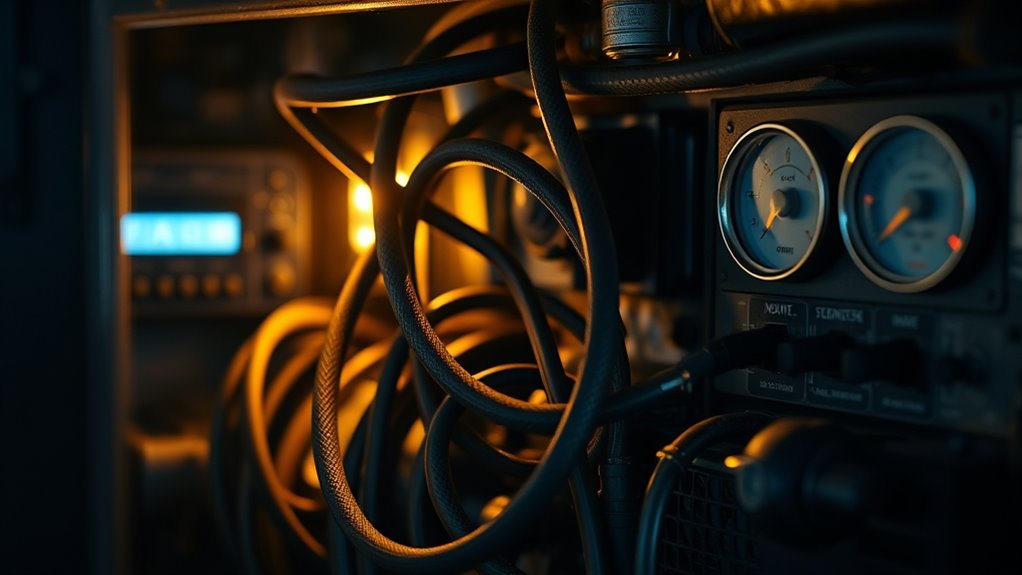
Ignoring surge power needs might seem like a minor oversight, but it can lead to significant hidden costs. Many people hold surge power misconceptions, underestimating how much extra power appliances require during startup. This oversight results in startup cost pitfalls, as your generator may struggle to handle the initial surge, causing damage or failure. When you overlook these requirements, you risk overloading your generator, which can lead to costly repairs or replacements down the line. Additionally, ignoring surge power needs can cause your appliances to malfunction or shut down unexpectedly, affecting your work or comfort. To avoid these hidden costs, always account for startup power demands, ensuring your generator can handle the initial surge without compromising performance or longevity. Understanding regional divorce statistics and local legal resources can help you better prepare for unexpected costs during major life transitions.
Practical Tips for Accurately Assessing Your Power Requirements
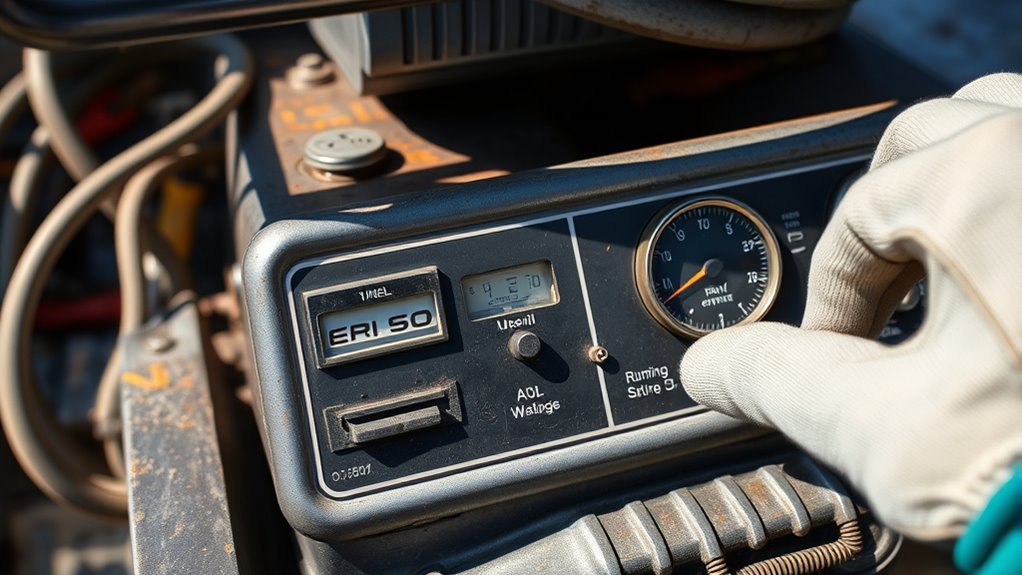
To accurately assess your power requirements, start by making a detailed list of all the appliances and devices you plan to run, noting their wattage ratings. Include both starting and running watts to avoid underestimating power needs. This careful calculation ensures you select a generator that balances capacity and fuel efficiency, preventing unnecessary fuel consumption. Pay attention to noise levels, especially if you’ll use the generator in residential areas or quiet environments. Choosing a model with lower noise levels can improve comfort and reduce disturbance. Remember, overestimating capacity can lead to higher upfront costs and inefficiency, while underestimating can cause equipment damage or failure. Accurate assessment ensures you select a generator that’s efficient, reliable, and appropriate for your specific power needs. Additionally, understanding starting watts vs. running watts helps prevent overloads and ensures your appliances operate smoothly.
How to Select a Generator That Minimizes Unexpected Expenses
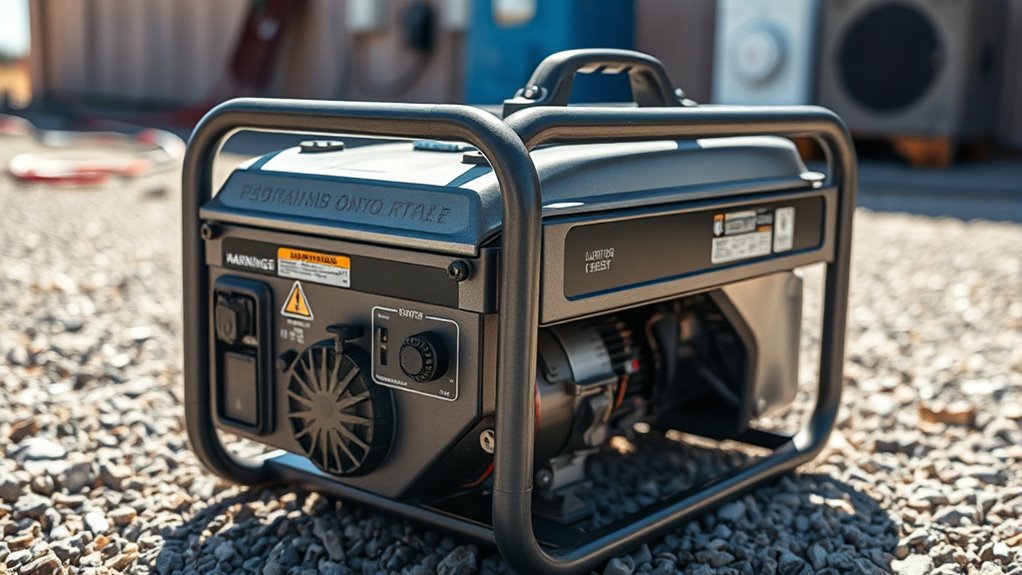
Choosing the right generator involves more than just matching it to your current power needs; it requires careful consideration of features and potential hidden costs. To minimize unexpected expenses, focus on these key factors:
- Fuel efficiency – Select a generator with high fuel efficiency to reduce ongoing fuel costs, especially if you’ll use it frequently.
- Maintenance costs – Opt for models known for low maintenance costs and easy serviceability to avoid expensive repairs down the line.
- Durability and warranty – Invest in a durable unit with a solid warranty to reduce long-term replacement and repair expenses. Additionally, considering the availability of accessories and replacement parts can help ensure ongoing affordability and ease of upkeep.
Frequently Asked Questions
How Do Temperature Changes Affect Generator Performance and Costs?
Temperature changes impact your generator’s performance and costs. When ambient temperature rises, your generator may overheat without proper temperature regulation, reducing efficiency and increasing wear. Conversely, cold weather can hinder fuel vaporization, causing starting issues. To avoid extra costs, guarantee your generator is equipped with adequate temperature regulation systems, and operate it within recommended ambient temperature ranges. Proper maintenance and monitoring help maintain performance regardless of temperature fluctuations, saving you money long-term.
Are There Brand-Specific Hidden Fees When Purchasing Generators?
You might think the price tag is all you pay, but some brands sneak in hidden fees like hefty brand fees or sky-high warranty costs that can surprise you. These fees can double or triple your expenses if you’re not careful. Always read the fine print, compare brands, and ask about extra charges upfront. This way, you avoid being blindsided by costs that can turn your investment into a money pit.
What Maintenance Costs Are Often Overlooked in Initial Budgeting?
You often overlook maintenance costs like routine inspections, which keep your generator running smoothly and prevent costly repairs. Additionally, consider spare parts availability; if parts are hard to find, repairs can become expensive and time-consuming. Budget for these ongoing expenses upfront to avoid surprises. Regular inspections ensure efficiency, while accessible spare parts mitigate downtime and repair costs, helping you get the most value from your investment.
How Does Fuel Efficiency Impact Long-Term Generator Expenses?
You’ll find that improving fuel efficiency can considerably lower your long-term generator expenses—by up to 30%, according to industry data. Reduced fuel consumption means fewer refueling stops and less money spent on fuel over time. Efficiency improvements, like upgrading to a more efficient model or maintaining your generator properly, help you save on operating costs and extend your equipment’s lifespan, making your investment more economical in the long run.
Can Improper Wiring Increase the Overall Cost of Generator Use?
Improper wiring can definitely increase your overall generator costs. Poor wiring safety can lead to frequent repairs or even damage, which means higher maintenance expenses. Additionally, if your wiring isn’t correctly installed, you might face unexpected installation costs or need to redo the work entirely. Ensuring proper wiring from the start helps avoid these extra expenses, making your generator operation safer and more cost-effective in the long run.
Conclusion
By mastering the mechanics of matching your generator’s wattage to your appliances, you prevent pricey pitfalls and preserve power. Focus on the fundamentals, avoid foolhardy underestimations, and select a suitable source that safeguards your savings. Staying savvy with surge and standby needs ensures your setup stays simple, safe, and sound. Remember, wise words and well-watched watts ward off unwanted woes, making your power purchase practical, painless, and perfectly protected.
